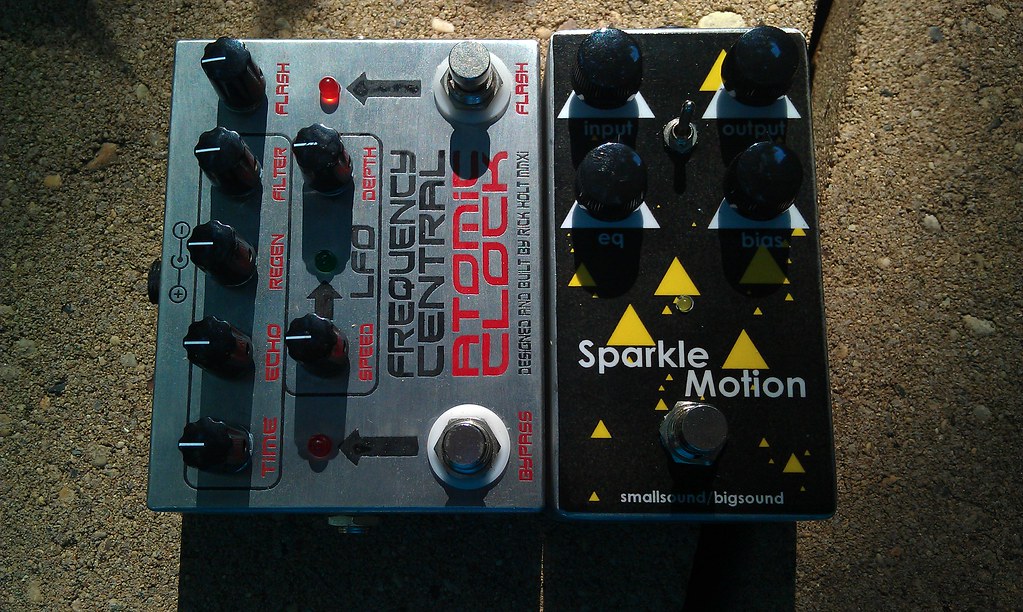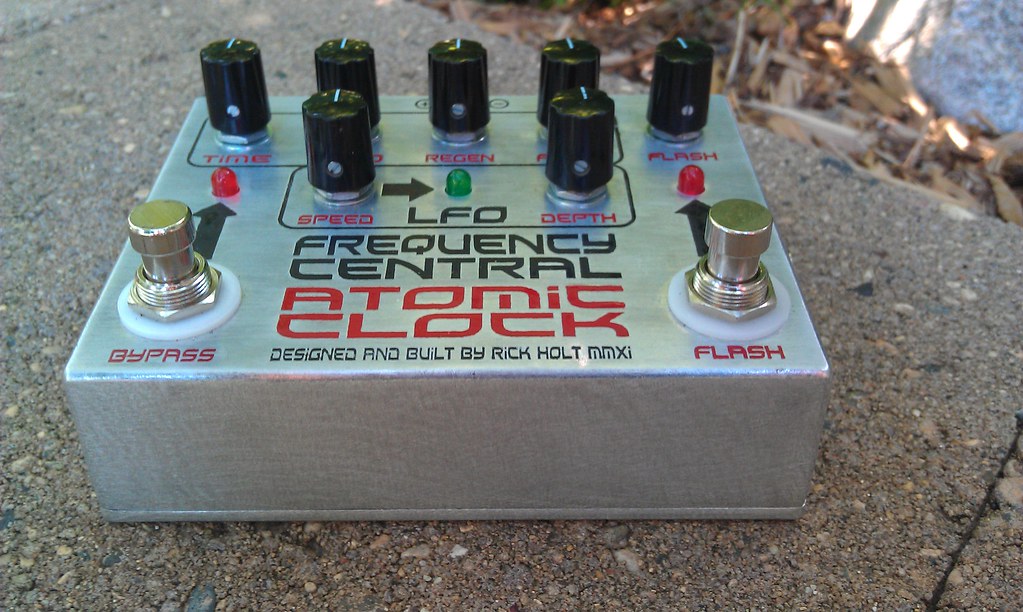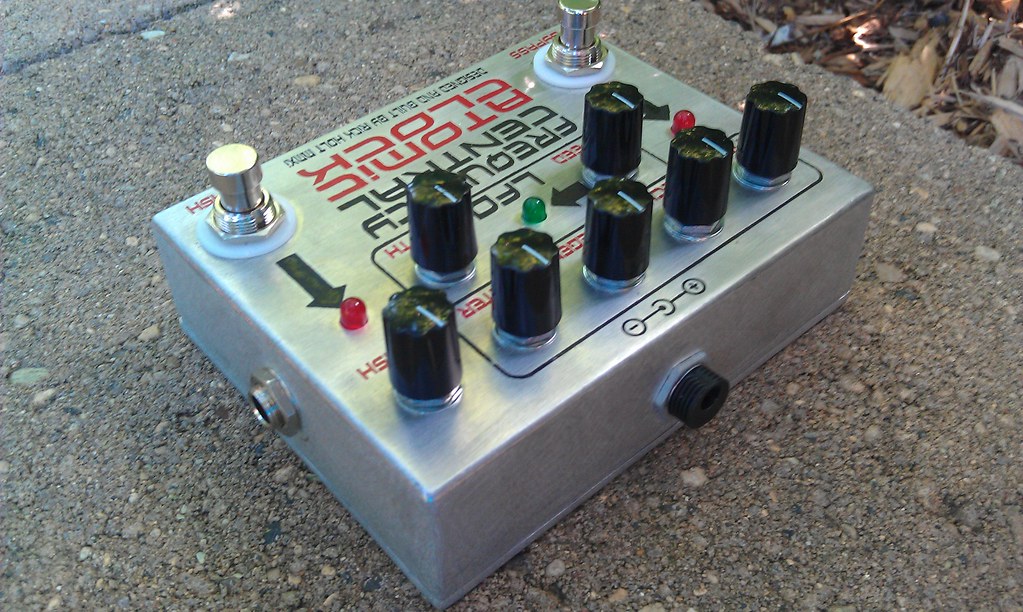Most of you have probably already read my interview with Rick, the life force of Frequency Central. If you haven't I suggest you do either before or after reading this, you can find it here. Rick built me a delay pedal that is his own original design and man is this thing impressive. Read on to find out about it's unique features and the wealth of sounds this device can bring you.
Hardware
 The Atomic Clock is extremely well built inside and out, I have never seen a Frequency Central pedal that isn't finished impeccably. You'd think Rick has OCD if you looked at the wiring inside this thing, it's a work of art. The pedal has an etched finish that will more than likely last forever and look good doing it. The Atomic Clock runs on standard 9V DC. It's control set might look kind of intimidating but Rick had a great description how the knobs work and interact with each other in the email he sent me:
The Atomic Clock is extremely well built inside and out, I have never seen a Frequency Central pedal that isn't finished impeccably. You'd think Rick has OCD if you looked at the wiring inside this thing, it's a work of art. The pedal has an etched finish that will more than likely last forever and look good doing it. The Atomic Clock runs on standard 9V DC. It's control set might look kind of intimidating but Rick had a great description how the knobs work and interact with each other in the email he sent me:Time - master delay time
Echo - blends the delayed signal with the dry signal
Regen - how many repeats there are
Filter - this is where it gets 'interactive'. The filter gives a flat response in the middle, but boosts bass at one end and treble at the other. As it's boosting the signal, this will also boost the Regen - so you'll need to turn Regen down to get the same repeats.
Flash - Connected to the Flash footswitch. It's a bit like turning up the Regen for more repeats. The Flash knob and Regen knob are internally connected. I find it best to set the Regen how you want it, then hit the Flash footswitch and set the Flash knob to where you want it.
So, the Regen, Filter and Flash have quite a bit of interaction - obviously it's not the world's simplest delay - hence it's flexibilty. It would be well worth writing down some nice settings you come across rather than leaving it to chance. That'll help you to 'grow into it'.
My fave sounds on the unit are with the filter turned right up to treble, so the repeats get tinnier and tinnier. Then throw in the Flash and you'll get runaway repeats that get progressively more distorted. I like that a lot!
Speed - LFO speed - can get very very slow - but have you tried it yet at like ultra fast speed? That's some great sounds.
Depth - defines how much the LFO affects the delay time. As soon as you add some LFO, you'll find the delay time changes from the 'base value' - that's the effect of the LFO. You'll aslo probabaly suss the insanity of maximum Depth!
As you can see it's a very versatile delay with plenty of control and the fit and finish are incredible inside and out.
The Sounds
 |
| The Atomic Clock compared to the Sparkle Motion in a 125B enclosure (the Clock isn't as tall) |
Atomic Clock Clean by Mike Fetting
This is just a basic clean, ambient delay, you can hear how it gets dirtier when you play harder.
Atomic Clock Delay with Vibrato by Mike Fetting
Here's the same delay tone but I kicked the LFO section in for a nice vibrato on the repeats
Atomic Clock Delay Clean/Dirty Vibe by Mike Fetting
Here the delay time is shorter and mixed more heavily with the dry tone to give it an almost Leslie-like tone. Then I kick on the Catalinbread Manx Loaghtan fuzz to show how well this delay mixes with dirt pedals.
Noisy Atomic Clock by Mike Fetting
Here the repeats are set on max and the LFO is providing a nice pulsing vibrato showing the amazing noise this thing makes when combined with fuzz. At the end I showcase the self-oscillation and how it is affected by tweaking the LFO speed and depth.
Final Word
The Atomic Clock is more than likely the only delay I'll ever need. It's got a wonderful base tone and the added controls for crazier sounds make this thing a must-have for me. I'm not really a delay-fiend but I can't find one thing I would change about this pedal unless you'd want to add on some expression inputs for on-the-fly control (which I don't really have a need for currently). Another huge factor for me is the fact that it works very well with fuzz and distortion, you can keep your tone but the delay sound doesn't get swallowed up either, they mix quite well. I think it's safe to say my delay search has ended. Contact Rick at Frequency Central and have him build you one, you won't regret it!



No comments:
Post a Comment